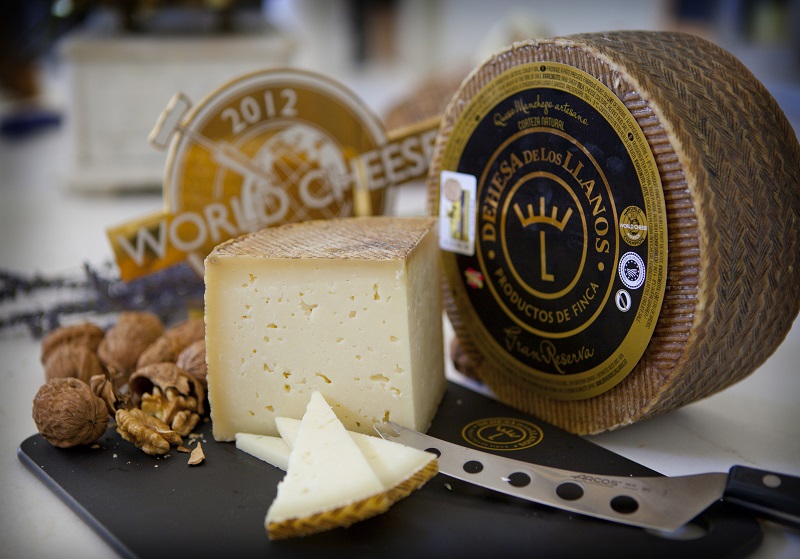Over 12000 years ago in Europe and the Middle East the first herds of Aurochs (ancestor to the cow) started to roam the plains. Leather bags were filled with the milk from these extinct bovines and placed over heated stones. Occasionally, the milk became a paste that separated from the liquid residue and was found to be edible. Slowly but surely, this accidental 'discovery' was mastered in order to produce the paste in a controlled manner, improving its quality . The most important archaeological discovery in "dairy history" may be the Sumerian Frieze (about 5000 years old) in Baghdad’s National Museum, which represents the phases of animal milking and milk curing. However in 2003 it was announced that a chemical analysis of 6000-year-old pottery shards showed ancient Britons also had a taste for cow's milk and goat's cheese, becoming the oldest proof yet of cheese consumption.
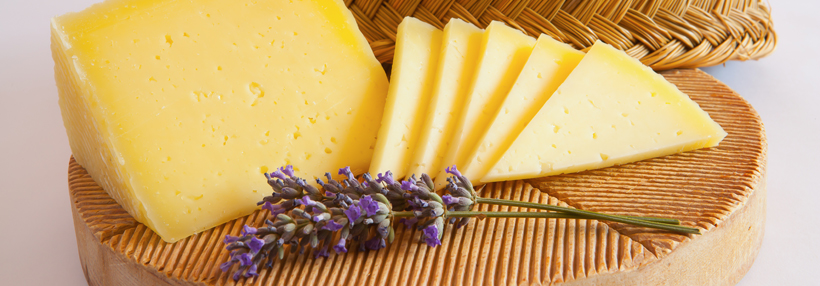
Cheese became later became popular in Greece and Rome and cheese production expanded throughout Europe by the Middle Ages, its consumption was widespread, mostly in monasteries, where the production of some of the best-known cheeses of today began.
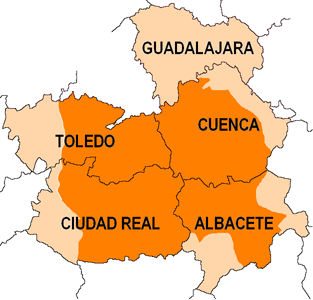 Of the 100 different kinds of cheese produced in Spain, 12 are protected by the Denomination of Origin (D.O.P.) label. Manchego cheese is without a doubt the most important and well-known sheep’s milk cheese in Spain. The shape and aspect of this cheese are very characteristic thanks to the traditional use of 'esparto' grass moulds which imprints a zigzag pattern around the cheese. The small wooden boards used for pressing the cheese also imprint the typical 'wheat ear' pattern on the top and bottom.
Of the 100 different kinds of cheese produced in Spain, 12 are protected by the Denomination of Origin (D.O.P.) label. Manchego cheese is without a doubt the most important and well-known sheep’s milk cheese in Spain. The shape and aspect of this cheese are very characteristic thanks to the traditional use of 'esparto' grass moulds which imprints a zigzag pattern around the cheese. The small wooden boards used for pressing the cheese also imprint the typical 'wheat ear' pattern on the top and bottom.
These rustic moulds are used outside of La Mancha as well. Thus, there is other Spanish sheep's milk cheese with similar shapes and markings, known commonly as "Manchego style" cheese. However, the true Manchego cheese, is made only from whole milk produced by the "Manchega" sheep raised in the "La Mancha" region. This region is a vast high plateau, more than 600 meters above sea level, which extends from east to west and north to south, adjoining the provinces of Toledo, Cuenca, Ciudad Real and Albacete. Manchego cheese has a long historic and literary tradition, as it was mentioned by Cervantes in the legendary "Don Quixote of La Mancha". Today, there are two types of Manchego cheese: the farmhouse type, made with unpasteurized sheep's milk and the industrial type, made with pasteurized milk. In both cases, however, milk from Manchega sheep is the only type used. The climate is extremely continental with cold winters and very hot dry summers.
La Mancha is a region with a long live-stock breeding tradition. Wool and animal bones have been found in some archaeological sites, as well as different utensils used to produce cheese as early as II century BC.
In the late XIX and beginning of XX centuries the first studies on Manchego Cheese were published. During this century the increased specialization of the farms has made La Mancha the base of a powerful cheese industry. Manchego Cheese producers have artisanal techniques while still managing to have intense production. Manchego Cheese has been protected by the Denomination of Origin since 1984. The D.O. stipulates the exclusive use of milk from manchega sheep, as well as an ageing period of a minimum of 60 days.
Manchego is an aged cheese, from semi-cured to cured, unpasteurized or pasteurized. It is produced through an enzymatic coagulation. The paste is pressed and uncooked. The base milk has to have a minimum of 6% fat. The milk coagulates at 28 to 32 º C (82 a 89 ºF) after adding animal curd. Occasionally lactic ferments and calcium salts are also added. This results in a compact curdle within 45 to 60 minutes. The curdle must then be cut to obtain lumps of 5 to 10 mm. The resulting lumpy paste is then slowly reheated to about 40ºC (104ºF). The liquid is removed and the dried paste is put into moulds where it is pressed for several hours. The salting is external, and it is achieved either by rubbing with dry salt, or by immersing the cheese in highly salted water, or a combination of both methods. The percentage of salt in the weight of the cheese can not be higher than 2.3% after two months of ageing. The ageing process must be done in fresh areas, with a humidity level of 75 to 85%, for at least 60 days.
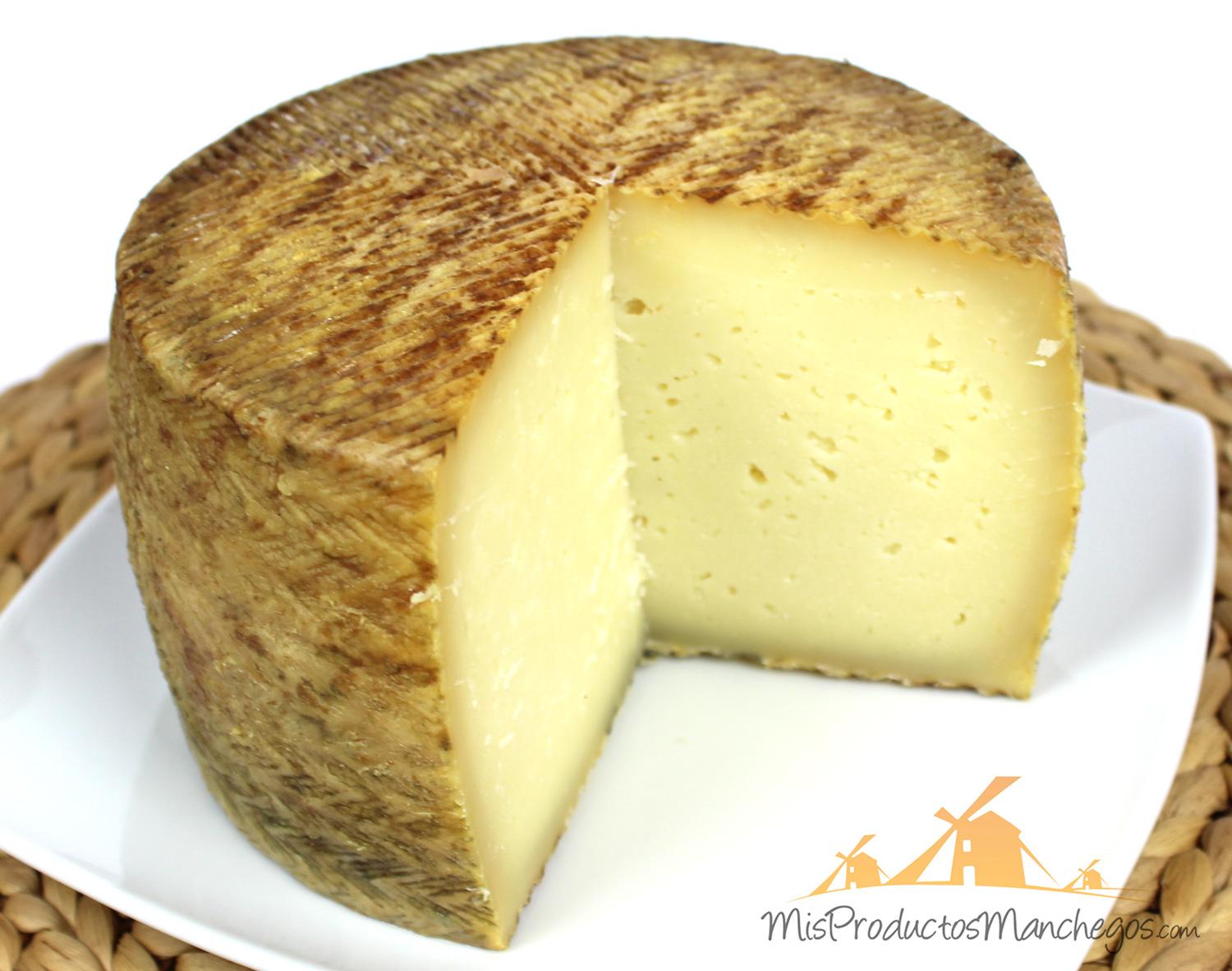 The wax rind is closed, with a yellow to brownish beige colour and should not be eaten. The interior is firm and compact, with only a few small air pockets unevenly spread out. The colour should be ivory to pale yellow. The taste is very characteristic, well developed, but not too strong, buttery and slightly piquant, with a sheep milk aftertaste.
The wax rind is closed, with a yellow to brownish beige colour and should not be eaten. The interior is firm and compact, with only a few small air pockets unevenly spread out. The colour should be ivory to pale yellow. The taste is very characteristic, well developed, but not too strong, buttery and slightly piquant, with a sheep milk aftertaste.
The intense taste and crumbly texture make it perfect to eat as it is, with just a slice of bread. A technique which is very popular in the Mancha is to cut the cheese up into thick slices and then place them in a glass jar, you then fill up the jar with extra virgin olive oil, picual is fantastic for this, and this not only preserves the cheese even longer but intensifies the flavour over time and increases the piquant of the cheese. 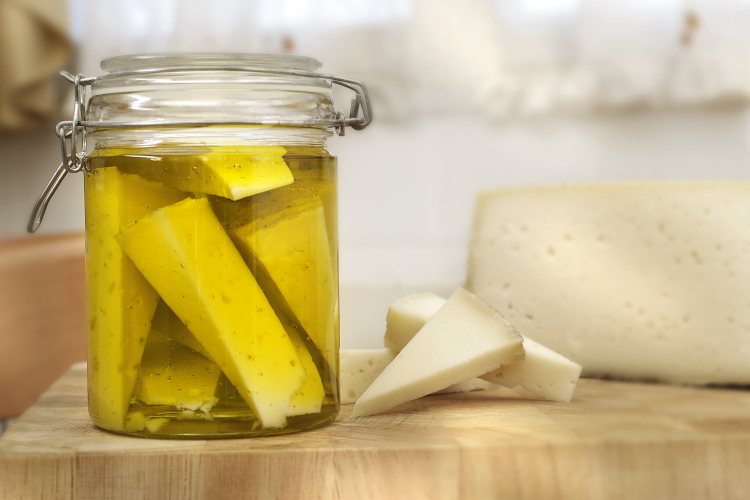 Quite a delicacy.
Quite a delicacy.
It is also great as the focal point of a starter, Manchego can be served with olives, sun-dried tomatoes, serrano ham, crusty bread and a robust red wine or dry sherry. It is also unbeatable with a bit of Branston's!
It is equally enjoyable as a snack or dessert with fruit, fruit tarts or jams. The aromatic intensity of a Manzanilla wine makes it an excellent choice for this cheese.
If you are looking to try a great Manchego Cheese, one of my favourites, which is also available in large supermarkets is Dehesa de Los LLanos, one of the best Manchego cheeses around and was voted best cheese in the world in 2012. It is a Manchego Viejo as it is cured for a minimum of 9 months, so it is a strong cheese but it is absolutely phenomenal.
